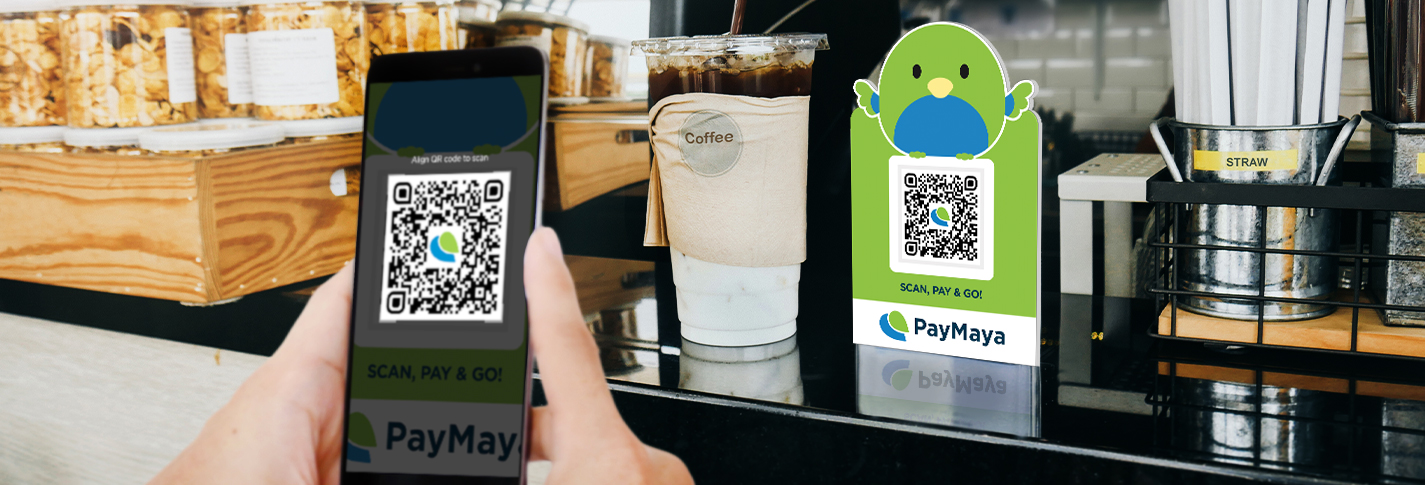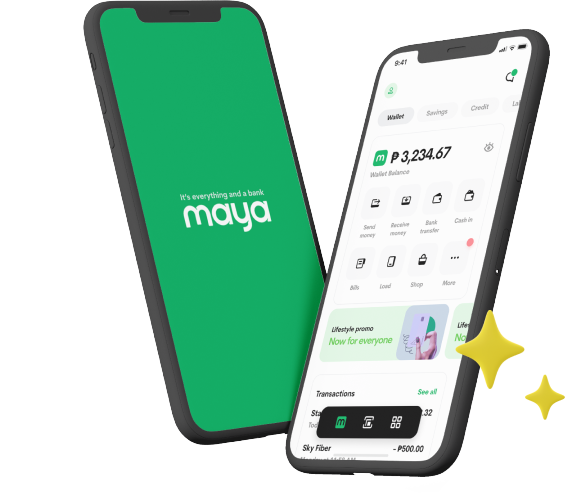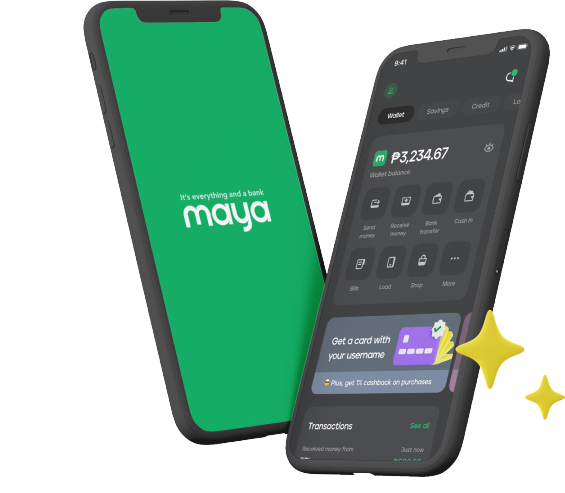
We’ve seen many of the items we use on a daily basis—road maps, calendars, dictionaries, and music players, to name a few—slowly shift from physical media to digital since the beginning of the current century. Leaps in digital technology and improved access to the internet have paved the way for the steady decline in the use of these items.
And they’re not the only ones that are going out of style. Even something as ubiquitous as paying with cash is slowly being replaced by cashless transactions. The availability of cashless payment solutions has put to light how inconvenient it is to rely on paper bills and coins to make purchases, receive payments, and keep up with one’s financial obligations. Today’s fast-paced lifestyle also demands that we continue to find ways to accomplish more tasks, even something as essential as paying electricity bills or buying groceries, in a click of a button—and using cashless means of transferring funds allows just that.
Common Types of Cashless Payment Solutions
Cashless payment refers to carrying out financial transactions without using physical currency like bills and coins. This isn’t exactly a new concept; even today, many people and organizations exchange or trade goods and services by bartering, a system that doesn’t rely on money as an intermediary.
However, the term cashless payment these days often refers to digital financial transactions that are carried out using banking cards, mobile wallet apps, quick response (QR) codes, point-of-sale (PoS) terminals, contactless payments, and gift cards and vouchers. Let’s take a closer look at these payment methods below:
- Banking Cards. Credit and debit cards fall under the category of banking cards and are the most-used cashless methods of payment in the world. Banking cards are paired with PoS machines and other equipment and applications that can read these cards and take payment from consumers. The cards can also be connected to mobile wallet apps or used in contactless payments.
- Contactless Payments. Cards and phones that make use of near field communication (NFC) or radio-frequency identification (RFID) technology can be used for contactless payments. In this method, the user only needs to tap the card or device near the PoS machine to finalize a transaction. A cashless payment does not require the card or phone owner’s signature or their PIN, which can be really convenient if the consumer or merchant are pressed for time or if their hands are full at the moment. Among the places where contactless payments are often used are toll booths and parking garages.
- Gift Cards and Vouchers. Gift cards are often issued by stores or given as gifts for participating in marketing promos and other special events. The gift card’s equivalent price goes towards buying certain items from the same shop or its partner merchants. It can also carry discounts that the consumer can use.
- Mobile Wallet Apps. These refer to mobile applications that are designed to quickly and safely send, receive, and store money, as well as store coupons and reward card information. The mobile app is installed on a smartphone and linked to the user’s bank account. Then, the user can move funds from their bank account to their mobile wallet and use the app to directly pay merchants and bills, load up their phone, or receive and transfer funds.
- PoS Terminals. PoS machines are central to a store’s operation. In addition to their many functions, PoS terminals are used to read consumer credit and debit cards. These days, there are also virtual PoS interfaces that allow micro and small business owners to make use of all the functions of a PoS machine without having to invest in a physical register.
- QR Codes. QR codes often come in the form of a square filled with black patterns, and they can be read by smartphone cameras. Merchants can have their own QR code, and the consumers will have to scan this image using their smartphone to complete a transaction.
Many of these methods have been in use for a long time, so consumers can expect most brick-and-mortar shops and e-commerce merchants to be able to accommodate or even encourage cashless payments.
The Many Advantages of Going Cashless
An improvement from the millennia-old method of exchanging cash for goods and services, cashless payment systems can be quite versatile and offer plenty of benefits to merchants and consumers alike. These advantages help popularize the system and encourage more users to try out different methods of exchanging money without handling physical currency:
Convenience
Convenience, perhaps, is the biggest reason why people choose to go digital. Cashless methods allow people to send and receive money instantly, often without seeing the person they’re transacting with face to face. Consumers can do their shopping at a physical store without being encumbered by bills and coins or counting money before and after a transaction. Alternatively, they can do their shopping online and buy the goods they need without ever leaving home, confident that they can pay for their purchases right then and there using their chosen banking card or mobile wallet app.
At the same time, these cashless systems also allow people to send and receive money regardless of where they are or what time it is. Users don’t need to take a quick lunch break or leave work early just so they can complete their transactions before the banks close. People who frequently travel or purchase goods from outside of their home country and merchants who operate in different locations around the world are also able to make full use of their preferred cashless payment methods. Their bank or mobile wallet app will automatically convert the money to the currency they use, so they can withdraw from an ATM with ease and engage in cashless payment transactions without second thoughts.
Better Security and Risk Management
One of the downsides of carrying cash is that it makes the carrier an easy target for criminals. Once physical currency changes hands, it will be difficult to prove to whom it rightfully belongs.
This is not the case when it comes to digital banking, where every user is connected digitally. If your card or phone gets stolen, you can block your account before the thief has a chance to move your money. And even after that, there’s still a good chance that law enforcement officials can trace where your money went and return it to you.
Cashless transactions are automatically recorded, and it would be easy to see how much and where the money was spent. More often than not, funds that have been collected through questionable means lack necessary paperwork. Users that are engaged in illegal activities will stand out in the system, and they can be checked and investigated. In turn, this will make it easier for authorities like law enforcement officers and forensic accountants to zero in on possible illegal activity, follow the paper trail, and recoup the money that was acquired through corruption or used to fund organized crime operations.
If a user becomes victim to a financial crime while shopping online, for example, there’s a good chance that they’ll still be able to cancel their payment. Merchants who have been accused of being a part of a financial crime can easily open up their records and clear their name, or even point the investigators in the right direction. At the same time, shifting to cashless transactions can reduce crime rates. In Missouri, researchers found that there was a noticeable drop in crime rate when the state made the shift to electronic cards after initially working with cash welfare benefits.
This doesn’t mean that it’s impossible to commit financial crimes in a cashless system. People will always try to find loopholes in the system to benefit from it. However, because it’s easier and much faster to implement security measures on a digital system, users can expect digital security experts to stay steps ahead of these unscrupulous individuals.
Better Transaction Speed at Reduced Costs
Making, moving, and storing physical currency cost money. Financial institutions purchase materials and use up manpower hours to make paper bills and coins. Merchants and banks have to pay for security, vehicle or equipment upkeep, and other expenses so they can ensure that their money will stay safe or arrive at its destination. There are also people that work with different physical currencies, and they can earn or lose money depending on the exchange rate and how fast they can convert their cash to the currency they prefer using.
There’s no need to do any of these if you’re dealing with cashless payments. Card or mobile wallet app users don’t have to spend cash to safeguard or transfer their money; their service providers can take care of transferring and converting their money at no or little cost.
Improved Spend Tracking
Merchants and consumers alike often have trouble keeping track of the cash they spend or receive, with many relying on budget apps and expense trackers to stay on top of their finances. At the end of the day, however, there’s still a chance that they won’t be able to keep track of their transactions down to the last cent. This won’t be a problem for merchants and customers who use cashless payment systems for most of their transactions. They can look at their expense history on their monthly statement, check their mobile wallet app to confirm if a customer’s payment made it through, or even get an email with a detailed list of their purchases from the last time they went shopping.
Better Data Collection
Cashless payment systems are designed to automatically keep records of all transactions, and this meticulous recordkeeping can be a useful resource for researchers and organizations that want to take a closer look at how people, in general, spend their money. This information, in turn, can be used by governments and financial institutions to draw up policies that benefit the economy. Also, by having a good idea of what a person’s general spending habits look like, law enforcement officials and financial security experts can refine their methods for identifying accounts involved in money laundering and other financial crimes.
Experts are claiming that we’re starting to move to a cashless society, one that has no place for cash-based criminal activity, but it can still take a long time for us to get there. Before that happens, the general population must be able to transfer the value attached to physical currency to digital transactions, and they must also have reliable access to technology and the infrastructure needed to seamlessly run a cashless financial system.
Some Drawbacks of Depending on Cashless Payments
Just the same, there are a few drawbacks that come with depending on cashless payments. One of these is in the area of privacy, as cashless transactions are not as anonymous as cash-based ones. A user’s data can be seen by other system users, and this can pose its own set of risks. This type of information can end up in the wrong hands and be used in malicious activities, so it’s important to have safeguards in place to prevent data leaks and keep cybercriminals from accessing the system.
Another issue is that the system is very dependent on technology. Network interruptions and power outages can be a big blow to merchants and consumers who depend entirely on cashless transactions. Consumers may also find themselves at a loss if their phone happens to run out of battery in the middle of a grocery run or while they’re commuting. As such, it’s a good idea to have a backup plan for sending and receiving payments in case there’s a glitch in the system that you are using.
The good news is that cashless financial systems are continually evolving. Indeed, organizations that are spearheading this movement are bent on addressing the issues that prevent people from parting with physical currency. That includes coming up with innovations that can make cashless payments more secure, more accessible, and more convenient to use for the general public.
References
- https://www.investopedia.com/ask/answers/101314/what-are-some-examples-barter-transactions.asp
- https://www.digipay.guru/blog/towards-a-cashless-society-major-benefits/
- http://ftp.iza.org/dp8402.pdf
- https://www.thebalance.com/pros-and-cons-of-moving-to-a-cashless-society-4160702
- https://www.totalprocessing.com/blog/the-benefits-of-cashless-transactions
- https://thefintechtimes.com/benefits-cashless-society/
- https://medium.com/n26-us/the-advantages-and-disadvantages-of-a-cashless-economy-ceaca3a87221
- http://documents1.worldbank.org/curated/en/765851467037506667/pdf/106633-WP-PUBLIC-Innovative-Solutions-Accelerate-Adoption-Electronic-Payments-Merchants-report-2016.pdf

